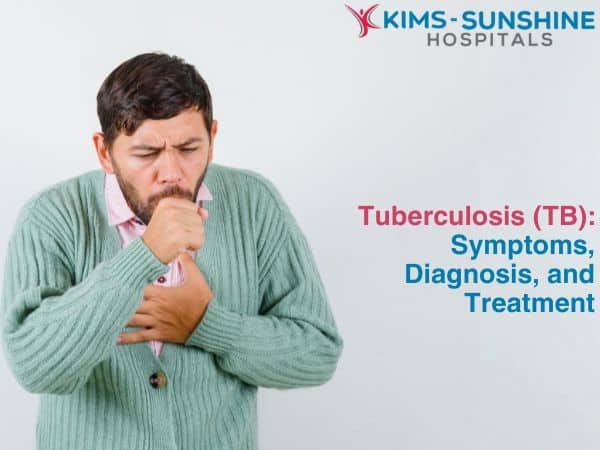
Tuberculosis (TB): Symptoms, Diagnosis, and Treatment

Tuberculosis is caused by mycobacterium tuberculosis- a bacterium that causes prominent nodules to form in the lungs, though it can be found in other sites in the body. Also called TB commonly, it is an opportunistic infection which causes symptoms only in certain individuals, though it may be present in many others. India has a high incidence of TB and accounts for almost 26% of all cases worldwide, even if a majority of the cases have been confined to just 5 countries. Though a bloody cough is a well recognised symptom, it is not the only one to be worried about. There are other signs you should know of and also recognise the difference between latent and active TB.
Early Symptoms Of Tuberculosis In Adults
Let us look at some of the prominent symptoms that a person with active TB may face, below-
If you have a persistent cough that doesn’t seem to go away and lasts for more than 3 weeks
- If you notice blood in the sputum or you cough blood up.
- You may have a poor appetite or feel tired all the time.
- Sudden unexplained weight loss may occur.
- You may have high fevers and chills too.
- You may sweat a lot only at night.
- Chest pain is pretty common too.
The good news is that it is treatable and though it can spread, it is not highly contagious. Plus, it can only be spread by people having active TB.
Difference Between Latent And Active Tuberculosis-
Latent tuberculosis is seen when a person has the bacterium but is not symptomatic in any way. Active TB can cause many of the abovementioned symptoms and continuous exposure – like talking, laughing, sneezing or coughing and being in their vicinity is still not enough to have a full blown infection. For most of us, our immune system does a splendid job of keeping the bacterium under control, which is why it can remain latent for years. When there is some sort of trigger like stress, infection or poor health in general, the bacterium can become active and cause infection. This is why it is called an opportunistic pathogen.
How Is Tuberculosis Diagnosed And Treated?
Tuberculosis is diagnosed with a sputum smear microscopy test and a sputum culture- where they check for the presence of bacterial DNA or the distinct rod shaped specimens themselves. If drug resistance is suspected, then nucleic acid amplification test (NAAT) is done, to fastrack accurate diagnosis. A chest X-Ray is also convenient as it can help identify nodules in the lungs. Doing a sputum culture however has always been considered a gold standard for TB testing- but it takes a long time- about 2- 4 weeks for most cases, though it may be longer in some cases. This is because the TB causing bacterium grows very slowly.
Treatment involves the use of a combination of antibiotics or drugs which can help kill the pathogen- but it takes time. Let us look at some treatment regimens commonly followed in India-
- If it is the first time you have been diagnosed, then you will need to take drugs, everyday for about 2 months or 8 weeks. The drug combination used is – Isoniazid, Rifampicin, Pyrazinamide, and Ethambutol. After the first 8 weeks, you will be asked to take rifampicin+isoniazid+ethambutol or rifampicin+isoniazid alone for 16 weeks afterwards. This is called the continuation phase of treatment.
- If you have already had TB before and have symptoms again, then treatment is for 12 weeks, with the same drug combination – Isoniazid, Rifampicin, Pyrazinamide, and Ethambutol. The continuation phase is for 20 weeks and the drugs are the same, except for Pyrazinamide.
- For drug resistant forms of TB, treatment can take many months or even years – like 24-27 months. The drugs that are recommended for use are levofloxacin, kanamycin, cycloserine, ethionamide, pyrazinamide and ethambutol respectively.
All of the dosages are decided based on the weight of the individual. It is super important to NEVER miss a dose and to eat the tablets at the same time everyday. If not, you risk developing drug resistant TB- which means longer and more grueling treatment regimens. If you repeatedly miss doses, then it may become problematic, but once or twice is not going to affect you very badly. Talk to your doctor if you have missed any dose, to be on the safer side. If nodules have been found in the brain or spinal cord or other organs, then you may be asked to take a few additional drugs too.
Side Effects Of Tuberculosis Medication And Treatment-
Continuous ingestion of antibiotics can cause long term issues like an upset stomach, nausea, vomiting, diarrhoea, insomnia, hypothyroidism, heart issues, jaundice, skin issues etc. You may also have these symptoms for a while after you have finished your drug regimen.






